#potash road
Text

Potash Road from Dead Horse - May 22nd 2023
#original phography#nature#photographers on tumblr#canyon#american southwest#potash road#moab#utah#dead horse state park#desert#mountains wayy in the back
116 notes
·
View notes
Video
Corona Arch by James Marvin Phelps
Via Flickr:
Corona Arch Moab, Utah
#utah#moab#arch#corona arch#sandstone#west#usa#southwest#landscape#nature#beauty#natural#canyon#outdoors#hiking#potash road#colorado river#james marvin phelps photography#flickr
6 notes
·
View notes
Text

Along the Potash road
#moab utah#potash road#color photography#nikon#travel photography#photographers on tumblr#landscape photography#scenic views#scenic vistas#utah#usa
37 notes
·
View notes
Text
Offroading Canyonlands Area in your 4x4 Vehicle
Have you ever wanted to take your 4×4 vehicle offroad in the Canyonlands Area? Well, I did. Here are some tips for exploring the Canyonlands using the Potash Road, White Rim Road, and Shafer Trail Road.
Tips for taking your 4×4 vehicle offroad in Canyonlands.
First, if you haven’t driven the area, aren’t an experienced off-roader, or just want to know what to expect? Go on an offroad adventure…

View On WordPress
#Adventure#Balanced Rock#Dead Horse State Park#Explore Canyonlands#Going offroad near Moab#Offroading in Utah#Offroading near Canyonlands#Potash Road#scenic drive#Taking your 4x4 vehicle offroad
0 notes
Text
They shoulda made Potash go on the road trip so he could get terrorized by Zucker in person
10 notes
·
View notes
Text
Petition to keep Potash as the Pens' rink-side/intermission/post-game reporter ...
Potash is clearly good luck for the Pens. He's on this road trip. The Pens won all three games.
The Pens lost against the Blackhawks, the Red Wings, the Blues, the Stars, the Ducks (the first time) and the Senators.
I'm not sure about the Blackhawks, but presumably Hailey was the reporter, since she was *the new guy* to open a new season. (My stream had Emily Kaplan.) I'm also not sure about the Red Wings' game. But Hailey was the reporter for the Blues game, the Stars game, the first Ducks game and the Senators game.
I think the record speaks for itself. The Pens win when Potash is hanging around outside the locker room.
12 notes
·
View notes
Text
love driving through the prairies and the road signs that list the attractions are like “potash mine” “grain elevator road” “agriculture museum”
2 notes
·
View notes
Text
An overview: Moab pt. 1
In 2021, I had no idea where Moab was or why it was considered special. By the beginning of 2023, I had my sights set on finding out. And I really do mean finding out, because I did minimal research! At the end of May that year, I was hooking up my tow trailer, packing my dogs in the truck, and headed west to drive about 1900 miles by myself to a campground in hopes the seasonal job offer I had lined up would work out. The tales of that road trip I’ll save to write for another day, as right now I want to focus on the magnificent experience of Southeast Utah. I heard many people over the years talk shit on Utah, tell me to avoid it, tell me there is nothing there but desert and Mormons. All it took was one different person telling me “I always end up going back to Moab because it feels like home” (shoutout to a wonderful person I met in high school). My advice to fellow travelers, or aspiring travelers, now is: don’t take travel advice from people who have never been anywhere. No offence to vacationers, because everyone travels and finds joy in their own ways, but if someone from western PA tells me not to go to a place like Utah when their yearly vacation is to Myrtle Beach or Florida, I would take their advice with a grain of salt. It might be good advice for them, but that doesn’t make it good advice for you! Discovering for myself what the place had to offer was important to me, and I went with the mindset that if I wasn’t having a good time, I could leave without fulfilling the seasonal commitment. I’m not normally the type to give something up so easily, but that thought was imperative to convincing myself to go try this. If you don’t like it, allow yourself to change your mind.
On my trek, seeing the “Welcome to Utah” sign was magical. There was a gradual change in landscape my last hundred miles or so through Colorado before the border. All the sudden I really was driving through the desert, with vast views on both sides. The sky appeared so open, and I couldn’t wait to see what the stars looked like at night. At the junction of I-70 and Highway 191 is a gas station called Jackass Joe’s, or Papa Joe’s according to Google Maps. This is about 35 minutes from downtown Moab, and I suggest stopping. It’s florescent green, covered in aliens and UFO’s, and they sell many convenient items but are known for their beef jerky and freeze-dried candies. It’s a fun place to take photos and look around to get your eyes off the road for a few minutes. Once on Highway 191, things really start to get interesting. The scenery changes from isolate desert to mountain ranges in the distance, and massive, red rock formations. I thought I had never seen anything more beautiful in my life (this phrase has crossed my mind several times, in several places all over the world, and each time I believe it wholeheartedly, and that’s how you remain happy with life). I looked up that night that these were the La Sal Mountain range of the Manti-La Sal National Forest, and I would spend a lot of time there later. At 13,000 ft, it is Utah’s second highest mountain range. The red rocks started getting closer and more densely occupying the space right after passing the airport (which you will surely miss if you’re not looking for it extremely hard) and the Moab Giants, a museum that will catch your eye with a life-size model of a tyrannosaurus rex outside. On the left hand side, you’ll pass Arches National Park and may not even know it, and then the entrance to Lions Park and a road called 128 next to the Colorado River, which is a must see for anyone who drives through this area. On the right of that is an equally enchanting Potash Rd, which goes up the opposite direction along the river. Then very suddenly, depending on the time of year, you’re in the hustle and bustle of a small town teeming with tourists from all over the world. On both sides there are fast food restaurants that you just don’t expect to see after the sheer magnitude of the rocks you just passed. There are ATV rental businesses, hotels, campgrounds, bicycle stores, and everything you can imagine a small town might need on top of that for their year-round residents. My favorite part was the lack of a Walmart (even Moab can’t escape the grip of Dollar General, though). I passed sign after sign advertising river tours, Jeep tours, base jumping, and things I didn’t even consider would be there. It can be overwhelming the first time! The coolest part for me was with the amount of traffic to look at, all of the overlanding vehicles you notice. The Jeeps with the full set up, the old-school VW vans, the expensive Sprinter vans, the truck campers, the RV’s and tow trailers, the giant Class A’s, the school buses! Bicycles and motorcycles mounted on everything, kayaks and canoes, extra gas cans everywhere, stickers and patches galore. I was thinking how surrounded I was by people who were very intentionally living their lives, and I knew coming here was a decision I would not regret. Downtown, I passed several cute little stores and bakeries I knew I’d be checking out soon. I’m a sucker for a handmade, local souvenir, and I love coffee shops. Exiting the main drag and continuing down 191, the stores and businesses lessen and you can see the full view of the Moab Rim, the cliffs along the west side of the town. These are beautiful when the sun hits them. And just ahead you can see the La Sal mountains in their full glory. I arrived at the campground, Moab Rim Camppark, and let the exploring begin.
3 notes
·
View notes
Photo

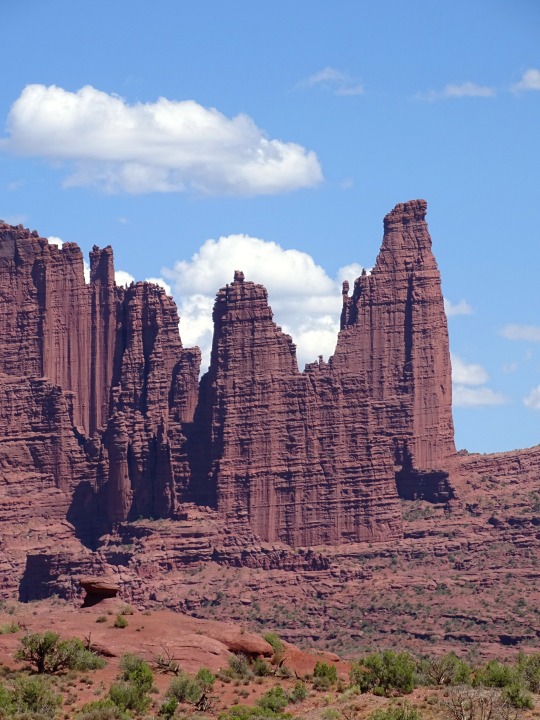

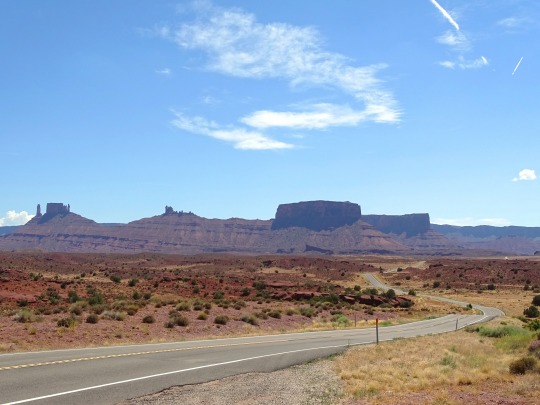
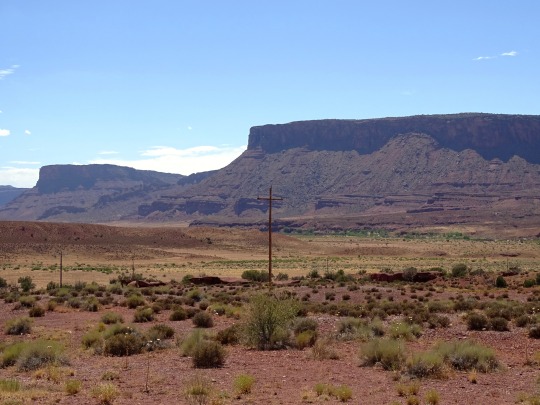



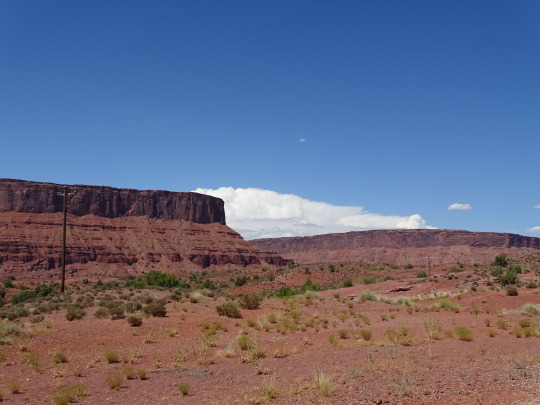

Hwy 128 Colorado River Scenic Byway, UT (No. 12)
Traveling 34 miles (55 km) west of Dinosaur, Colorado, the Dinosaur Diamond encounters the small city of Vernal, Utah. Vernal borders the western end of the Dinosaur National Monument; other notable attractions nearby include Steinaker State Park, Red Fleet State Park, Flaming Gorge National Recreation Area, and the Ashley National Forest.
Continuing along the Dinosaur Diamond, US 40 and US 191 converge within Vernal, heading west for 30 miles (48 km) to the city of Roosevelt. Roosevelt is located on the edge of the Uintah and Ouray Indian Reservation. Heading 29 miles (47 km) to the west is the county seat of Duchesne, located within the reservation. Nearby Duchesne are Starvation State Park and Kings Peak (the highest point in Utah), which is part of the Uinta Mountain range. The Uinta Mountains are one of the few mountain ranges in the contiguous United States which run east–west, and are the highest range to do so.
Within Duchesne, US 40 and US 191 diverge, and the DD continues 55 miles (89 km) south along US 191 over an unnamed mountain pass, through the small town of Helper, and into the larger city of Price. The numerous attractions surrounding Price include College of Eastern Utah Prehistoric Museum, Manti-La Sal National Forest, Huntington Lake State Park, Scofield State Park, and Ninemile Canyon which features numerous petroglyphs. Also nearby is the Cleveland-Lloyd Dinosaur Quarry, a prehistoric mud trap which claims to be the densest concentration of Jurassic dinosaur fossils in the world.
Traveling 63 miles (101 km) southeast along US 191, the DD encounters the city of Green River. Notable features surrounding Green River include the San Rafael Swell, Green River State Park, and Goblin Valley State Park. Also nearby is Crystal Geyser, a rare (but man-made) cold water geyser caused by the expansion of carbonized "soda pop" water within. Within Green River, US 191 converges with I-70 for a short while and diverges again, south towards the city of Moab, 55 miles (89 km) from Green River.
Just south of the junction of US 191 and SR-128, the city of Moab features a number of nearby attractions. Arches National Park, Canyonlands National Park, Dead Horse Point State Park, and the Newspaper Rock and Potash Road petroglyphs.
Leaving Moab, the DD continues north along SR-128 to its terminus with I-70 in Cisco. Traveling east along I-70, before completing the "diamond" back in Grand Junction, Colorado.
Source: Wikipedia
#Dinosaur Diamond Prehistoric Highway#Hwy 128 Colorado River Scenic Byway#Utah 128#Hwy 128 Scenic Byway#Upper Colorado River Scenic Byway#USA#National Scenic Byway#road trip#desert#geology#nature#landscape#countryside#nice drive#cliff#canyon#mesa#original photography#travel#Utah#vacation#summer 2022#SR-128#blue sky#clouds#red rock#rock formation
11 notes
·
View notes
Text
Rushsly: Almost The Bottom
SPOILERS FOR ENDGAME CONTENT UNDER THE CUT.
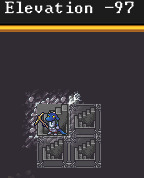
Two miners into the depths: Zhasrca Foldcounselled and Nucra Framegarnishes.
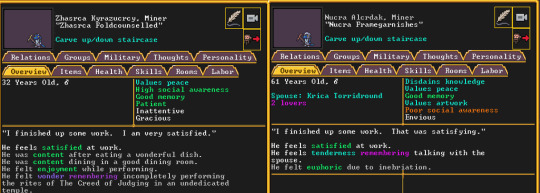
Doors shut firmly behind them. I can't think of a worse omen than Nucra fondly remembering a conversation with his wife.
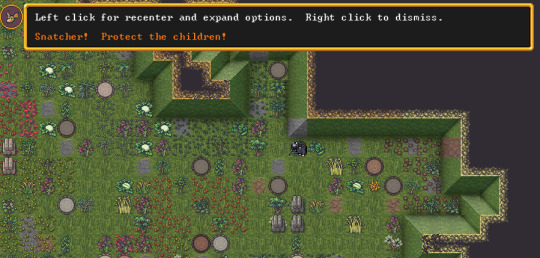
Up on the surface, a single thief is spotted approaching the fortress. Why now?

Cire Osokcat is caught by them as he heads out to dump some trash, but they breeze right past him... and he decides right then "I'm going to go fishing." Right after the drawbridge lever was pulled. I draft him into the military just so that I can specifically force him to move off the bridge in the vain hopes that he isn't caught in the mechanisms and lost.

He ignores the order, but fortunately runs off the bridge to chase one of the ratfolk down. Like an idiot trying to beat a train through a crossing so he can get to Joe's Crab Shack but ironically being saved by having some kind of road rage incident. Did you have to do this now, Cire!?!?!? The bridge is up, the ratfolk who made it in are targeted, and the one outside the base will hopefully walk right into our traps any second now.

The miners are literally still at work down at -116, cracking through gold vein after gold vein. The earth truly does run rich down here. Maybe this will all turn out completely fine. Maybe Rushsly will be the most grossly wealthy fort of all kobblekind.

Due to the fact that no scouts ever survived to come back and tell the ratfolk "hey don't go into the big-ass animal den," one of the thieves walks straight into the animal den.

It takes Ace Steel just a single swing to split one of the ratfolk's heads open.

His compatriot can only give a few seconds more of chase before being literally chopped in half by the swordmaster Shycla Zhizorsa.

The one who ran into the den is torn apart by the dogs before finally being finished off by a giant rattlesnake. The drawbridge is lowered once more so that the military might set upon the final thief.
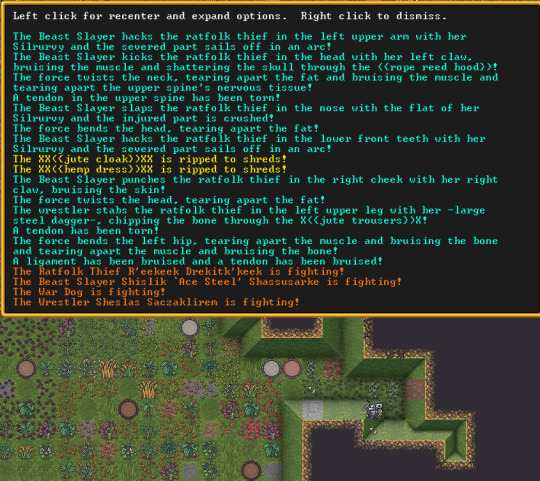
Though he tries to run home, possibly to give the advice of "we really need to stop fucking with Rushsly," Ace Steel is faster, angrier, deadlier. Chopping off his arm, smashing his nose, knocking out his teeth, before one stab in the leg from Sheslas Spurnspread's dagger leads him to just plain run out of blood. And just like that, it's time to clean up. A waste of time, but an amusing one. The poor bastards, our constant enemies, fated to never even know what's below the surface of our fort. They have no idea of what we're on the precipice of, they wouldn't understand if they did. In another world, I feel bad for them, have sympathy for their plight, maybe even like them; in this one, I just want them out of our way. Adamantite will be ours.
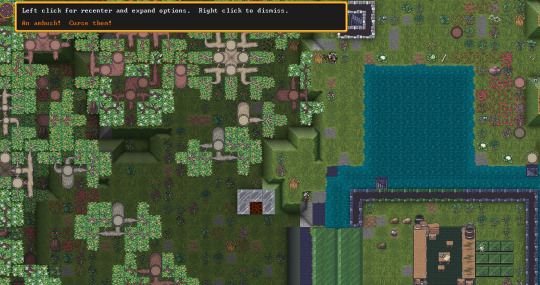
But god damnit, the bastards are so fucking persistent!! Taking no heed of their scouts' inevitable demise, after however many fucking raids they've already sent and failed, they spring another ambush upon us.

Susle, a potash maker (which is a job that actually matters in my fort for the first time since I started playing the game) is shot twice, once in the rib and once in the knee, but almost manages to evade his pursuer...
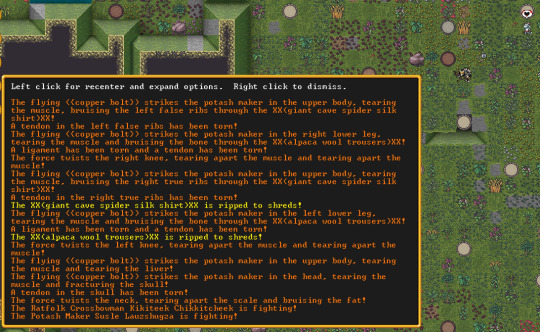
until he decides not to run straight in through the trapped entrance, and instead try to flee out into the woods.
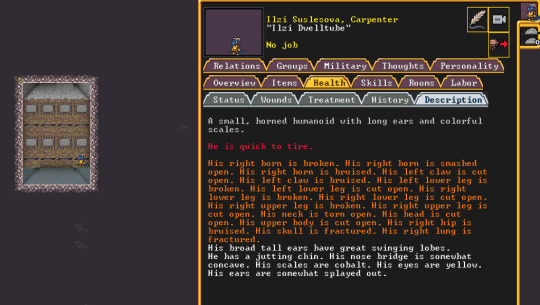
By the time the kobbles start actually taking heed of the civilian alert, more of them are wounded. Ilzi Dwelltube, a clothier who must have been one of our newest arrivals, similarly just tried to run around between the trees instead of getting to safety just a few tiles away, and takes eight fucking bolts for his trouble before making it past where the ratfolk can pursue him.
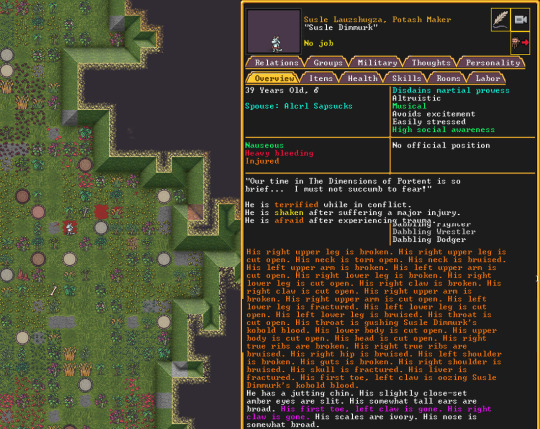
Susle tries to crawl to safety, fighting so hard, harder than any kobble ever should, but...

It's no use. Susle does not live to see adamantite, and the ratfolk who took it from him just saunter around outside all self-satisfied over finally getting a single win over the kobbles. One of them wanders off, three more just kind of loiter.
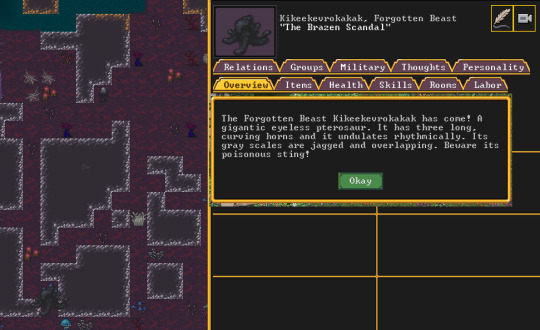
We get our first beast from the third cavern layer, but it's not like it can get in, nobody even goes near the fortifications that peer into the third cavern, who gives a shit. Well, the least we can do is put down the three fucking rat bastards that remain before they can dare to get home to their shit-encrusted little hole in the ground and brag, and so our own militia are sent out through the long trap tunnel to put them down.
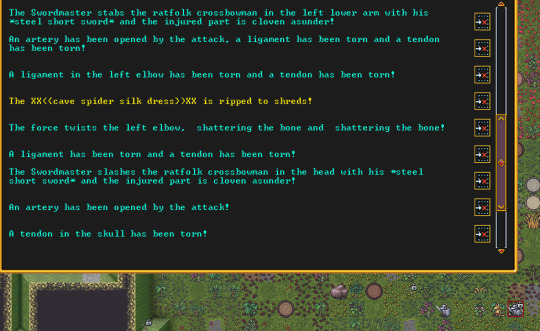
Arm cut open, head cut off.

The crossbow bolts that are not outright parried are still effortlessly blocked, bouncing hopelessly off the kobbles' heavy steel armor. Another head lopped off. Go for a hat trick?
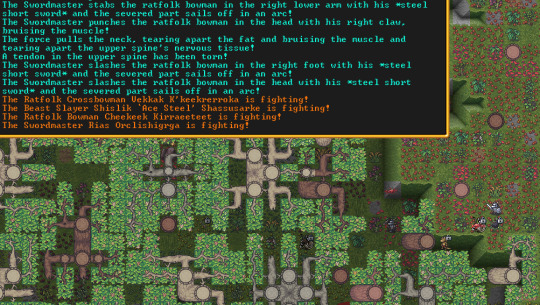
Three heads. Yeah motherfucker. Hat trick. We'll do one big patrol of the entire map before sounding the all-clear and letting Susle be buried.

After a quick sweep, there's no more rats in sight. The corpses will just be left out there in hopes of being understood as a warning: see how far their heads landed from their bodies? That could be you. But it hurts to see Susle go, and on the subject of hurting...

Six scars now mark the poor clothier. He's fixed up well enough, but it's doubtless he'll be able to walk without a crutch again.

Cire, the doctor who is still erroneously listed as "guard captain," fares a bit better, though there's never anything good about a skull fracture, just things that could be worse about a skull fracture. He prays to Tulrac Dungsgalls, the god of death, disease, and deformity. Hey I like some triple D's myself you know what I mean heh heh ohhh yeaaah sorry. Just trying to add some levity to the situation I guess. One has to wonder if it is Tulrac's influence that will win over this fortress, or Dasël's - the god of rain and rainbows. I fear we are headed for death, though it would be nice if we didn't.
Before you ask, I didn't leave the miners trapped in the shaft this whole time - right as the ambush kicked off, I let them out to hang back and sit on standby with some drinks and snacks. They say you should basically never fight a war on two fronts - I don't know who says that, maybe nobody actually says that because it's obvious, and it's actually just the sort of wisdom you get clued in on by absorbing all sorts of other wisdom and hearing all sorts of other things, I don't know. Because sometimes someone will be like "They say blah blah blah" but then nobody actually says blah blah blah, it's not like a quote from someone, it's literally just them putting "common sense" into words. And on that note I've always thought "common sense" was bullshit. "Common sense" just means you made an assumption that ended up being proven right, and people who talk a lot about how "nobody has anyone common sense" tend to actually just be making a bunch of assumptions and putting themselves into a feedback loop of thinking well my assumptions were right before so they're obviously going to be right this time too. And I mean it's not actually hard to see how people get like that anymore, because nowadays media and journalism and all that shit is more about validation than verification. And that goes for everyone on every part of the political spectrum, I probably get my brain blasted just as bad being a Mao-appreciating-but-otherwise-agnostic anarcho-communist as like, your average small-business-tyrant Fox News conservative does. There's hardly ever any real investigations, that shit doesn't make money and nobody wants to fucking hear it when you tell them that thing they thought was wrong, they just don't, nobody in the entire world likes that besides the very small percentage of people so deeply committed to science or competition or whatever else that they can literally just shove their ego out of the way, that's only like 3% of people and they're busy winning fucking Super Smash Bros. Melee tournaments or fucking around with electron microscopes. Another good way to blast your fucking ego out of here is with psychedelic drugs like acid or mushrooms but as a big fan of both I gotta say doing acid makes it very hard to write. Anyway
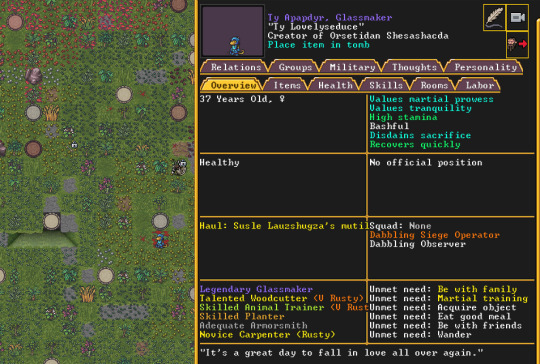
Finally lifting Susle's lifeless body from the shade of a great citron tree, Ty Lovelyseduce finally carries him to his final resting place in a green glass coffin, just like the other kobbles we've lost. He will never see what comes next to Rushsly, whether riches or ruin, put suddenly to his final sleep just days before the world would change. But her thoughts as she lays him down are not of dread, fear, or pain. They're of optimism.
Adamantite is the perfect material: it can make near anything, from armor to clothes, from weapons to coins, light enough to dance in yet strong enough to protect - if the rumors are true, at least. And the promised days must be close, now, they have to be. Golden days of wealth and fame, where kobbles can live without fear of bolt or blade.

The earth must surely relent soon.
2 notes
·
View notes
Text
Australia’s Danakali (ASX: DNK) is selling its 50% stake in the Colluli potash project in Eritrea, Africa, almost 13 years after partnering with the Eritrean National Mining Corporation (ENAMCO) to build the mine.
Subject to conditions, the deal with Chinese company Sichuan Road and Bridge Group is expected to be finalized between March and May next year [...]
The Colluli potash project is considered one of the world’s most significant and lowest-cost sources of sulphate of potash (SOP), a premium grade fertilizer.
The project has the world’s largest JORC compliant reserve at 1.1 billion tonnes. It also contains other fertilizer products, such as muriate of potash (MOP) and gypsum, along with rock salt.
There is also potential for kieserite and mag chloride to be commercialized with minimal further processing required.
A United Nations report published in 2019 suggested that Colluli could significantly boost the economy of Eritrea.
The project is the only known source of potash that allows extraction of the fertilizer in solid form. It also has access to solar, wind and geothermal energy systems – the East African rift.
The operating environment weighed heavily on Danakali’s decision, as Eritrea is ruled by one of the world’s most oppressive regimes and was until 2018 on the UN’s sanctions list.
3 Oct 22
2 notes
·
View notes
Text
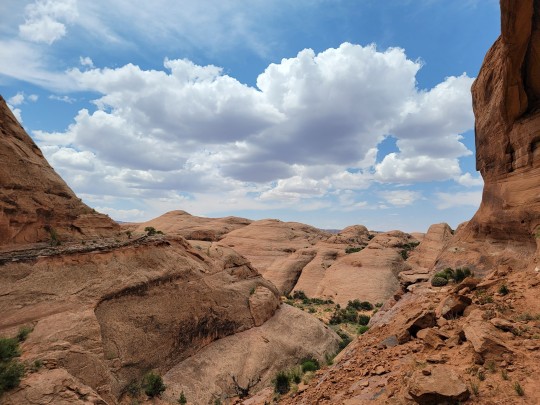
View from the Longbow Arch - May 22nd 2023
#nature#potash road#moab#Utah#original phography#photographers on tumblr#lensblr#desert#rock formations#american southwest#roadtrip 2023
33 notes
·
View notes
Text
BUSINESS BEFORE PLEASURE
1917

Business Before Pleasure is a play by Montague Glass and Jules Eckert Goodman. It was originally produced by A.H. Woods starring Barney Barnard and Alexander Carr as Potash and Perlmutter.
This was the third play featuring Potash and Perlmutter, based on characters created by Glass for a series of short stories published serially in the New York Evening Post.

These were then published in a collection Potash and Perlmutter: Their Co-partnership Ventures and Adventures, in 1909. In the first story, Potash and Perlmutter meet and become partners in the ‘cloak and suit' [garment] business.
They first appeared on Broadway in the 1913 in the eponymous Potash and Perlmutter, sometimes known as Potash and Perlmutter in Society, followed by Abe and Mawruss (1915), the title referring to the characters’ first names. After Business Before Pleasure, there was His Honor: Abe Potash (1919), Partners Again (1922), and Potash and Perlmutter, Detectives (1926), all written by Glass with various co-authors. All except the last were produced by Woods.
There was also a feature film titled Potash and Perlmutter (1913) which spawned two sequels: In Hollywood with Potash and Perlmutter (1924) and Partners Again (1926).
Potash and Perlmutter were both Jewish, like Glass himself. The characters' Jewishness is highlighted by Glass' use of dialect in writing their dialogue.

Abe Potash was originally played by Barney Bernard (left) and Alexander Carr originated the role of Mawruss Perlmutter. Although they are most associated with the roles, other actors also played the characters on stage and screen.
SYNOPSIS: “Business Before Pleasure” finds Perlmutter and Potash working in the ‘fillum’ [film] business. They seek financial backing and hire actors, including an ‘umpire’ [vampire] named Rita Sismondi who gives the pair considerable angst.
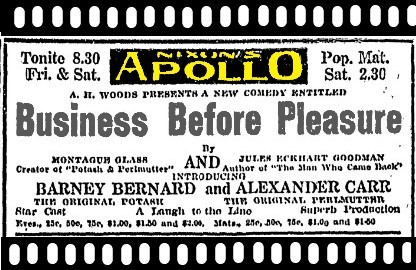
Business Before Pleasure premiered in Atlantic City at Nixon’s Apollo Theatre on August 6, 1917.

The play opened on Broadway at Eltinge’s 42nd Street Theatre on August 15, 1917. The play ran a remarkable 357 performances, more than twice that of the previous P&P installment, but just short of the original, which ran 441 performances.
“The success of ‘Business Before Pleasure' was made certain by the engagement of Barney Bernard and Alexander Carr for the principal roles. They have been acting the parts so long that they fit them like Annette Kellermann’s tights after her first dive — the old kid glove comparison does not seem to express It — and they carried off the honors easily.” ~ BROOKLYN DAILY EAGLE
Annette Kellermann was an Australian swimmer and vaudeville star who was one of the first women to wear a one-piece bathing costume, instead of pantaloons.
"It's a wonderful play," said the first man to leave the Eltinge Theatre last night after the final curtain, and "It's a wonderful play," echoed his companion, with strong emphasis on the word ‘wonderful’. It is safe to say that half the audience expressed the same sentiment, and the other half were so full of delightful memories of the show that they didn't want to break the spell by talking. ~ BROOKLYN CITIZEN

A clever Labor Day advertisement for the play ostensibly a typed note from the stars to their producer about their popularity.
In February 1918, while the Broadway production continued into its sixth month, the first of four road companies was launched in Pennsylvania.

In May 1918, Bernard and Carr left the show and were replaced by Robert Leonard and Gus York, who had originated the roles in the London production of the first play.
"’Business Before Pleasure’ with Barney Bernard and Alexander Carr missing, failed to find the favor which It had enjoyed with those two players present, and accordingly abandoned its intention to make a summer run of lt.” ~ NEW YORK TIMES, June 23, 1918

In 1924, a film version of the play was released under the title of In Hollywood with Potash and Perlmutter. It was the second film to feature the characters. The role of Potash was taken by George Sidney replacing Barney Bernard, who had died six months before the film’s release. In the UK the film was titled So This Is Hollywood. Genuine screen ‘vampire’ Betty Blythe played Rita Sismondi. Jersey City-born silent film star Norma Talmadge and her sister Constance made appearances as themselves.
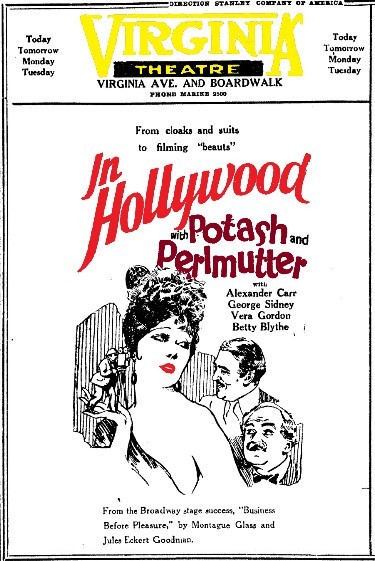
The film premiered in Atlantic City at the Virginia Theatre on the Boardwalk on November 22, 1924.
From cloaks and suits to filming ‘beauts’!
#Potash and Perlmutter#Business Before Pleasure#1917#Montague Glass#Jules Eckert Goodman#Alexander Carr#Barney Bernard#Norma Talmadge#Betty Blythe#Annette Kellermann#Broadway#Broadway Play#Theatre#Atlantic City#Nixon's Apollo Theatre#Boardwalk
1 note
·
View note
Text

Colorado river from the Potash road
#colorado river#potash road#moab utah#utah#color photography#nikon#travel photography#photographers on tumblr#landscape photography#scenic views#scenic vistas#nature#hiking#outdoors#usa
22 notes
·
View notes
Text
Unlocking Insights: A Comprehensive Analysis of the Industrial Minerals Market
Introduction: Unraveling the Dynamics of Industrial Minerals
The industrial minerals market serves as a foundational pillar of various industries, providing essential raw materials that underpin manufacturing processes, construction activities, and technological advancements. From cement production to glass manufacturing, industrial minerals play a pivotal role in shaping modern infrastructure and economic development.
Understanding the Market Landscape: Key Insights and Trends
1. Diverse Applications Across Industries
Industrial minerals encompass a broad spectrum of minerals and materials, each with unique properties and applications across diverse industries. From silica sand used in glassmaking to limestone for construction aggregates, the versatility of industrial minerals makes them indispensable in sectors such as automotive, aerospace, electronics, and renewable energy.
2. Market Drivers and Growth Catalysts
Several factors drive the demand for industrial minerals, including population growth, urbanization trends, infrastructure development, and technological innovations. As emerging economies undergo rapid industrialization and urban expansion, the demand for construction materials and industrial inputs continues to surge, bolstering the growth of the global industrial minerals market.
3. Sustainable Practices and Environmental Considerations
In an era marked by heightened environmental awareness and sustainability concerns, the industrial minerals industry is embracing eco-friendly practices and resource-efficient technologies. From optimizing extraction processes to reducing carbon emissions and waste generation, companies are increasingly prioritizing sustainability initiatives to mitigate their environmental footprint and enhance stakeholder value.
Market Segmentation: Exploring Key Mineral Categories
1. Silica Sand: A Versatile Industrial Commodity
Silica sand stands as one of the most widely used industrial minerals, valued for its high purity, strength, and abrasion resistance. With applications ranging from glass manufacturing and foundry casting to hydraulic fracturing in oil and gas extraction, silica sand remains a cornerstone of various industrial processes and applications.
2. Limestone and Dolomite: Building Blocks of Infrastructure
Limestone and dolomite are essential constituents of construction materials, serving as primary aggregates in concrete, asphalt, and road construction. As global infrastructure projects proliferate and urbanization trends persist, the demand for limestone and dolomite is expected to remain robust, driven by the need for sustainable and resilient building solutions.

To Get a Snapshot of the Industrial Minerals Market Report, Download a Free Report Sample
3. Potash and Phosphate: Fuelling Agricultural Productivity
Potash and phosphate minerals play a critical role in agricultural fertilizers, enhancing soil fertility and crop yields to meet the world's growing food demand. With agricultural intensification and adoption of modern farming practices, the demand for potash and phosphate minerals is poised to escalate, particularly in regions with expanding arable land and shifting dietary preferences.
Market Dynamics and Future Outlook: Navigating Opportunities and Challenges
The industrial minerals market is characterized by dynamic supply-demand dynamics, regulatory considerations, and technological disruptions. As stakeholders navigate geopolitical uncertainties, trade dynamics, and evolving consumer preferences, strategic partnerships, and investments in research and development will be instrumental in driving innovation and sustainable growth across the industrial minerals value chain.
Looking ahead, the industrial minerals market holds immense potential for expansion and diversification, propelled by emerging trends such as circular economy principles, digital transformation, and the transition towards cleaner and greener technologies. By embracing innovation, fostering collaboration, and adhering to responsible stewardship principles, industry players can unlock new avenues for value creation and competitive differentiation in the global marketplace.
0 notes
Text
Children of Hamiltonianism-Keynesianism

The burned hand teaches best. After that, advice about fire goes to the heart.
J.R.R. Tolkien, The Lord of the Rings: The Two Towers, 1954
For couriers with the gumption to haul mail overland by horse from one side of the continent to the other the trip would be braved over forty days atop pockmarked roads of poor quality (Kemble 1938: 11). Albeit until 1858 all mail delivery would be left to the exclusive province of steamships the horseback Pony Express brought to the fore in 1860 lasted only a single year before being prostrate with bankruptcy. By contrast boats halved the journey with a cargo capacity beyond compare as their nautical bridge transported a staggering amount of goods and passengers in service to westward expansion. It was the happy accident of the Gold Rush entreating fortune-seekers who were spellbound by California’s Eldorado which paid rich dividends to the Pacific Mail and United States Mail companies. Business for the former swelled with such alacrity it compelled the firm to establish an engine foundry of behemoth size in what was erstwhile the sleepy San Francisco Bay (Chandler and Potash 2007). Coal stations sprung up at waypoints all the while the company built a forty-seven-mile railroad to expedite the trek over the Panama’s Isthmus which began service in 1855. Two decades on from the Pacific Mail’s founding did the Panama route account for half of the rush of humanity who sought California’s friendly climes (Kemble 1938).
The industrial policy subsidizing steamships had partly to do with the geopolitics of the time as well. Territory was ceded as concessions inked in the Treaty of Guadalupe Hidalgo amidst the postbellum year of the Mexican-American war. The prevailing winds of Manifest Destiny saw the land acquisition of 525,000 square miles under this modus vivendi in 1848 transferred from the Republic of Mexico to the Union (Suarez 2023). The magnitude of this annexation was on par with the Louisiana Purchase of 1803 when Napoleon Bonaparte who was in dire need of funds for his looming conflict with Britain relinquished France’s stake in the New World (Cowen 2020). In fact so alike were these two transactions that a symmetry of nominal terms existed since America procured both swathes of land for the identical amount of $15m each. Therefore with the advent of steam propulsion making the caprices of wind for sails outdated the opportunity was plumbed to link the eastern and western coasts. As if by providence the gold soon discovered in Sutter’s Mill at the base of the Sierra Nevada Mountains was a coup de foudre for statesmen whose steamship subsidies would broach nationhood as much as it was about mining gold. A species of symbiosis emerged between the geopolitics of colonizing the West and partaking in its bonanza.
Bringing distant markets together by plying an artificial duopoly between the Pacific Mail and United States Mail Steamship Companies set a standard to replicate. The legacy of selecting champions to spur economic development would be a lodestar for future statecraft. Whatever industry was held in abeyance in virtue of less than ideal conditions would be remedied by government favouritism. Observe how the prototype of steamship subsidies inspired the railroad duopoly between the Union Pacific and the Central Pacific Railroad Companies as codified by the Pacific Railway Act in 1862. Observe the oligopoly of domestic airlines between the TWA, United Airlines, American Airlines and Eastern Airlines which owed its provenance to the 1925 and 1930 Air Mail Acts. Observe how Pan American Airways monopolized foreign travel courtesy of the Foreign Air Mail Act of 1928. Each of these vignettes were wrought by industrial policy in specific instances where economic liberalism could not enter the fray when beleaguered by unmitigated risk. The bespoke solution to this market failure invoked government as a lender and guarantor for a subset of companies whose position could foster the industry until firmly established. Contextualizing steamship subsidies throws into relief just how seminal this policy was.
Unlike the sail-driven predecessors operating costs were too prohibitive were it not for the grace of statism. In fact American subsidies would be gleaned from the practice of Victorian Britain’s Cunard Line which Parliament underwrote and whose largesse was reciprocated with mail service across the Atlantic. The Union’s mimicry of this market intervention helped defray costs apportioned to the upkeep of these seagoing leviathans. Engines, boilers and four-hundred tons of coal accounted for well-nigh half of gross tonnage and provisions parcelled out for the multi-week trip further added expense. The real limiting factor lay squarely in the law of diminishing returns insofar as early steam technology failed to generate dramatic gains in speed commensurate with a ship’s stockpile of coal. A voyage at 10 knots consumed 37.75 tons daily whereas 12 knots saw a twofold increase of intake at 65.25 tons just for that little extra pickup. The scores of coal depots scattered along the route for layovers somewhat attenuated the profligacy of fuel but this fiscal bête noir was not so easily dismissed. In little time did the Pacific Mail Steamship Company’s annual subsidies rise by 58 percent from $190k to $348k in adjusting for these logistics. The outlays were nevertheless worthwhile as they funded circa 30,000 missives departing on each trip (Chandler and Potash 2007).
Detractors are not erroneous in their persuasion that government subsidies are liable to distort market forces but the alternative is no better. Naturally the perennial debate between classical supply-side economics and Hamiltonianism or Keynesianism is appropriate since no single remedy has universal application. Yet it is irrefutable that just the right amount of monetary stimuli can kickstart whole industries whose existence would have otherwise fallen into oblivion. A catch-22 thus emerges: to have something by hook or by crook versus having nothing at all. Where a vacuum exists when none dare to create industry the treasury can be the progenitor of enterprise to offset risk. Underinvestment epitomizes the death knell for great projects which have floundered. America’s steamships manifestly lend credence to this proposition as the darlings of subsidies like the Pacific Mail and the United States Mail Steamship Companies precipitated a good deal of development. Perhaps perfect competition might have been defenestrated as the duopoly crowded-out competitors in its coastwise service yet the truism remains that the endgame begot a bevy of benefits for the country (Kemble 1933: 407). Before railroads would usurp this preeminence the Union could now penetrate remote lands where riches lay.
0 notes